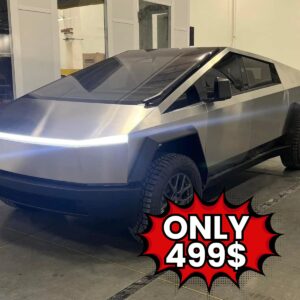Ray-Ban is more than just a sunglasses brand; it’s a cultural institution. Its journey from a purely functional item for military pilots to an indispensable accessory for rebels, movie stars, and fashion enthusiasts worldwide is a fascinating story of innovation, strategic marketing, and enduring design.
Let’s delve deeper into how Ray-Ban carved its indelible mark on the world of eyewear and became a symbol of cool.
The Spark of Necessity: Birth of the Aviator
Ray-Ban’s origin in 1937, under the optical giant Bausch & Lomb, was purely practical. US Army Air Corps Colonel John A. Macready tasked them with a critical mission: develop sunglasses that could effectively reduce intense glare at high altitudes without obscuring a pilot’s vision. The result was the “Anti-Glare” prototype, soon patented as the Aviator. Its distinctive teardrop shape and green G-15 lenses were designed for optimal eye protection in the cockpit.
This functional genesis imbued Ray-Ban with an immediate aura of authenticity and performance. When images of heroic figures like General Douglas MacArthur sporting Aviators during World War II circulated, the public began to associate the glasses with bravery, patriotism, and an undeniable sense of cool. The functional tool began its transformation into a desirable lifestyle item.
Hollywood’s Embrace: The Wayfarer’s Cultural Takeover
While the Aviator cemented Ray-Ban’s place in military history, the 1950s saw the brand make a deliberate and brilliant pivot towards everyday fashion. This was spearheaded by the introduction of the Wayfarer in 1952. Designed by Raymond Stegeman, its bold, trapezoidal plastic frame was a radical departure from the prevailing metal designs.
The Wayfarer’s journey to iconic status was heavily fueled by Hollywood. It became the quintessential accessory for:
- Rebels: Think James Dean in Rebel Without a Cause (1955), who personified youthful defiance and helped make the Wayfarer a symbol of counter-culture cool.
- Sophisticates: Audrey Hepburn in Breakfast at Tiffany’s (1961) showcased the Wayfarer’s versatility, proving it could be both edgy and elegant.
These cinematic placements weren’t accidental; they were often the result of strategic product placement, a pioneering marketing tactic that linked the glasses directly to desirable cultural figures and aspirational lifestyles. The Wayfarer, through the power of celebrity, became a must-have item, experiencing its first major wave of popularity.
The 1980s Resurgence: From Screen to Street Again
The 1970s saw a brief dip for some classic Ray-Ban styles as fashion trends shifted. However, the 1980s brought an unprecedented resurgence, once again largely thanks to Hollywood’s influence:
- The Blues Brothers (1980): Jake and Elwood Blues, with their matching black suits and Wayfarers, cemented the glasses’ association with music and a distinct, understated cool.
- Risky Business (1983): Tom Cruise’s unforgettable performance, notably a scene where he slides across the floor in just socks, a shirt, and Wayfarers, single-handedly propelled the model back into mainstream popularity. Sales of the Wayfarer reportedly skyrocketed by 50% following the film’s release.
- Top Gun (1986): Cruise did it again, but this time it was the Aviator that became a global phenomenon. His portrayal of Maverick, a daring fighter pilot, reaffirmed the Aviator’s original heroic imagery and introduced it to a new generation.
These film appearances, combined with celebrity endorsements from music legends like Michael Jackson, turned Ray-Ban into an undeniable symbol of 1980s pop culture. The Clubmaster, with its distinctive browline, also gained significant traction during this period, appealing to a more intellectual and retro aesthetic.
Luxottica’s Global Vision: Reinvention and Expansion
In 1999, a pivotal moment arrived when Bausch & Lomb sold Ray-Ban to the Italian eyewear conglomerate Luxottica Group. This acquisition, valued at US$640 million, marked a new era for the brand. Luxottica, with its vast global distribution network, advanced manufacturing capabilities, and deep understanding of the fashion industry, was perfectly positioned to propel Ray-Ban to unprecedented heights.
Under Luxottica, Ray-Ban has continued its journey as a global icon by:
- Maintaining Heritage, Embracing Innovation: While rigorously protecting the classic designs (Aviator, Wayfarer, Clubmaster), Luxottica invested in new lens technologies (polarized, photochromic) and introduced modern interpretations (New Wayfarer, Round, Erika).
- Global Accessibility: Leveraging Luxottica’s extensive retail footprint (including chains like Sunglass Hut), Ray-Ban became even more accessible worldwide, solidifying its position as a truly global brand.
- Strategic Collaborations: Ventures like the Ray-Ban Stories smart glasses with Meta demonstrate the brand’s willingness to push technological boundaries while staying true to its design ethos.
- Consistent Marketing: Ray-Ban continues to invest heavily in marketing campaigns that blend its rich heritage with contemporary trends, utilizing digital platforms, influencer marketing, and emotional branding to connect with diverse demographics.
From a functional necessity for pilots to a ubiquitous symbol of style and individuality, Ray-Ban’s journey is a masterclass in brand longevity. It’s a testament to timeless design, clever marketing, and the remarkable ability to stay relevant across generations, constantly adapting while never losing its core “cool.”
What’s your favorite Ray-Ban model, and what story does it tell for you?

